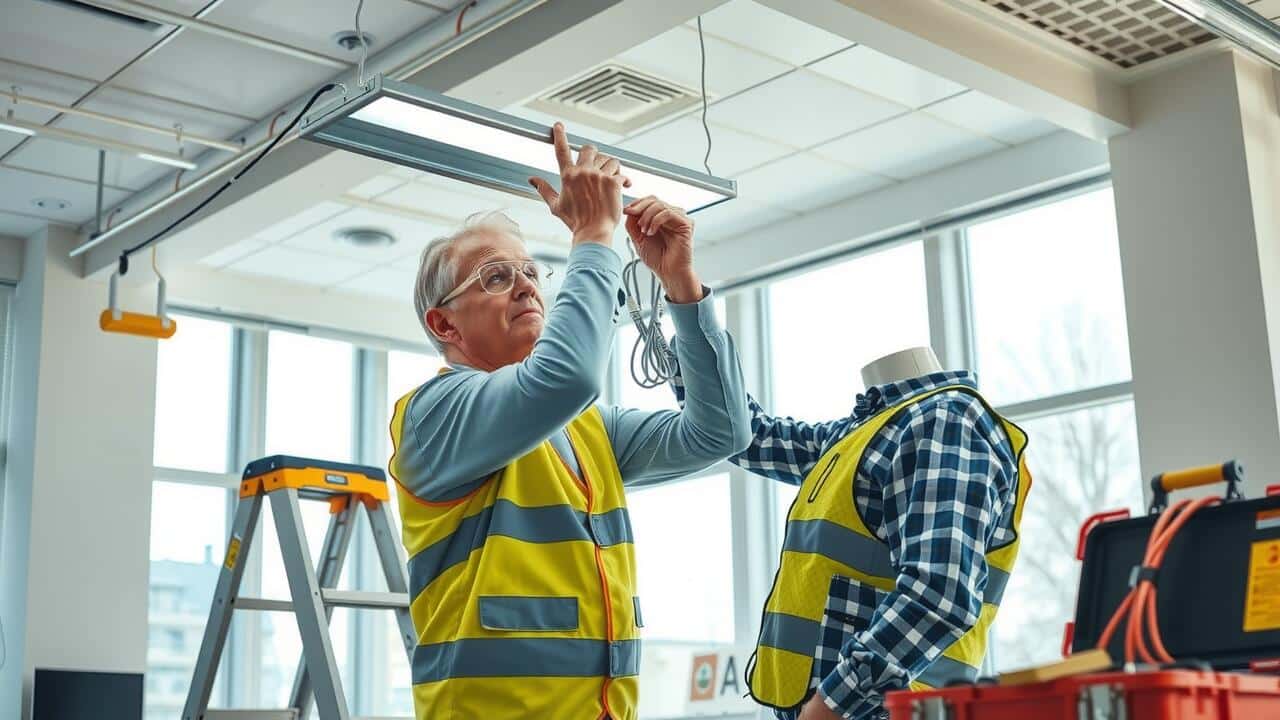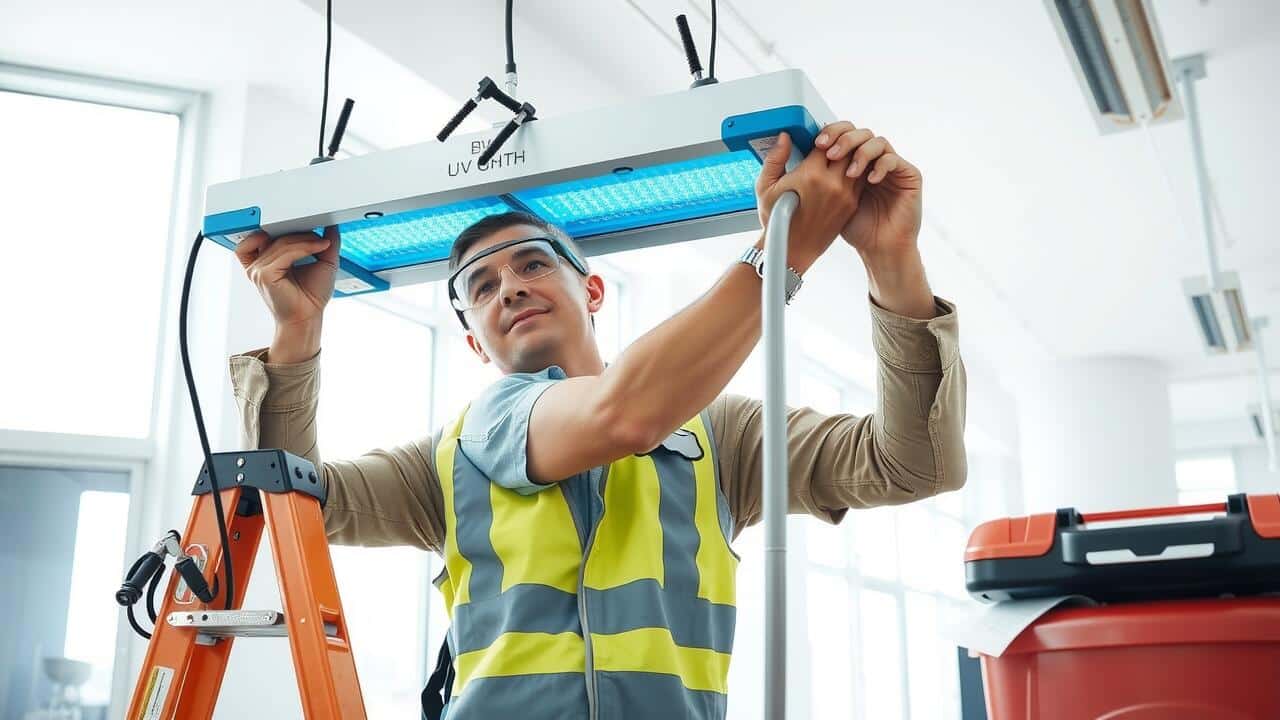
At One Step Air Duct Cleaning Dallas, we offer expert UV Light Installation services designed to enhance the air quality in your home or business. Our advanced UV light systems are strategically installed within your HVAC system to effectively eliminate harmful allergens, bacteria, and viruses that can circulate through the air ducts. By utilizing ultraviolet light technology, we provide an additional layer of protection, ensuring that you and your loved ones breathe cleaner, healthier air year-round. Trust our experienced technicians to deliver exceptional service and improve your indoor air quality with our state-of-the-art UV light solutions.
Optimal Placement of UV Lights
Proper placement of UV lights within an HVAC system is essential for maximizing their effectiveness in improving indoor air quality. Strategic locations typically include the air handler and the evaporator coil. Installing UV lamps near the evaporator coil helps to prevent mold and bacteria growth in these critical areas. Additionally, placing lights within the ductwork can help eliminate airborne contaminants as they circulate through the system.
Consideration of airflow patterns within the ducts is crucial. Placing UV lights at points where airflow is strongest can enhance the sterilization process of microorganisms. Adequate spacing between fixtures ensures a broad coverage area, reducing the risk of missed spots. Adequate electrical wiring and a reliable power supply are necessary for consistent operation, emphasizing the importance of professional installation rather than a DIY approach.
Identifying the Best Locations in Ductwork
When planning the installation of UV lights in air duct systems, it’s essential to identify key locations where they will be most effective at combating airborne contaminants. The ideal placement is typically upstream from the air conditioning system’s evaporator coil. This positioning allows ultraviolet light to effectively eliminate pathogens, fungi, and harmful bacteria before the air circulates throughout the indoor environment. Additional strategic locations might include areas near supply ducts and return ducts, where germs and allergens are likely to proliferate.
Consideration of the ductwork’s layout is also critical. Each twist, turn, and branch can influence the UV light’s effectiveness. Installing UV lights in straight sections of the ductwork can enhance their efficiency, as light emission diminishes with distance from the bulb. Factors like humidity levels and the presence of biofilms might impact installation decisions. Regular assessments of locations in ductwork can help maintain optimal conditions for air purification and ensure long-lasting effects throughout the HVAC system.
Maintenance Considerations for UV Systems
The longevity and effectiveness of UV systems rely heavily on regular maintenance and monitoring. Components such as the germicidal light source should be checked periodically to ensure they are functioning optimally. Over time, UV bulbs can lose their efficacy, requiring replacement to maintain disinfection quality. Using appropriate tools and adhering to recommended schedules can help prevent issues that may arise due to neglect. Cleaning the ducts regularly can reduce the buildup of dirt and contaminants that may otherwise shield microorganisms from UV exposure.
In addition to monitoring the bulbs, attention should be given to electrical components and connections. Ensuring that connectors are secure and free from corrosion contributes to the reliability of the system. It is also advisable to keep an eye on the condensate drain to prevent water buildup. Implementing proper safety measures, such as wearing protective eyewear during maintenance tasks, will help safeguard against potential UV exposure. A quality maintenance routine will not only enhance the performance of the system but also contribute to a healthier living environment by ensuring effective disinfection.
Ensuring Long-Term Effectiveness and Safety
Incorporating a UV light purification system into HVAC equipment can significantly improve indoor air quality. Proper installation plays a critical role in achieving long-term effectiveness. Ensure that the germicidal lamp is positioned correctly within the ductwork, typically near the air handlers, to maximize exposure to ultraviolet radiation. This setup not only helps to disinfect the air but also reduces the presence of molds and other indoor air pollutants. When installing, use self-tapping screws and ensure all fittings are securely grounded. Grounding prevents electrical hazards and enhances the UV system’s safety.
Regular maintenance is essential to keep the UV system functioning optimally while ensuring user safety. This includes periodic checks on the germicidal lamp, as its effectiveness diminishes over time. It is crucial to replace the bulb according to the manufacturer’s guidelines to maintain proper filtration and disinfection rates. Inspect connectors and wiring for any signs of wear. Additionally, routine inspections can detect potential issues before they escalate into health hazards. Adequate eye protection is advisable when working around UV equipment to avoid exposure to harmful rays during maintenance.
Cost Factors of UV Light Installation
When considering the cost of UV light installation, several factors come into play. It’s essential to account for the initial investment needed for the UV lamps and the installation process itself. Professional installation may entail additional labor costs depending on the complexity of the air duct system and the experience of the technician. Ensuring compliance with electrical codes and safety standards can also impact overall expenses.
Ongoing costs should not be overlooked, as regular maintenance is crucial for sustaining the effectiveness of UV systems. Replacement of bulbs at specified intervals, typically every year or two, adds to the long-term financial commitment. Additionally, monitoring energy consumption can provide insights into how the installation contributes to cleaner air and potentially improves health outcomes, making it essential to weigh both immediate and future expenses carefully.
Understanding Upfront and Ongoing Costs
Investing in UV light installation for air duct systems involves both upfront and ongoing expenses that homeowners should be aware of. Initial costs typically include the price of the UV light units themselves, which can vary based on brand and wattage, as well as installation fees. Homeowners may also need to consider the complexity of the electrical circuit and wiring that will be needed to ensure safe and effective operation. Purchasing additional components such as safety gloves and glasses for installation can also add to these upfront costs.
Ongoing costs involve regular maintenance and potential replacement of UV light bulbs, which have a limited life span. It is essential to account for these expenses in the overall budget since bulb replacement is necessary to maintain the effectiveness of the germicidal properties that help eliminate microbial growth and other contaminants in the ductwork. Additionally, increased energy consumption may occur due to the running of UV lights, adding another layer to the long-term financial considerations of such installations. Homeowners should balance these costs against the benefits of improved health and reduced risks of diseases associated with contaminated air systems.
FAQS
What are UV lights used for in HVAC systems?
UV lights are used in HVAC systems to reduce the growth of mold, bacteria, and other pathogens in the ductwork, improving indoor air quality.
How do I determine the optimal placement of UV lights in my ductwork?
The optimal placement of UV lights is typically near the air handler or in areas where airflow is slow and where contaminants tend to accumulate. Consulting with an HVAC professional can help identify the best locations.
How often do UV lights need maintenance?
UV lights should be inspected and cleaned regularly, typically every six months, and replaced annually to ensure their effectiveness and safety.
What are the cost factors involved in UV light installation?
Cost factors for UV light installation include the upfront purchase price of the UV system, installation labor, and ongoing maintenance costs, such as bulb replacements and periodic inspections.
Can I install UV lights in my HVAC system myself?
While some homeowners may have the skills to install UV lights themselves, it is recommended to hire a professional to ensure proper installation and compliance with safety standards.


